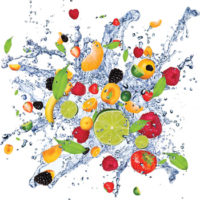Multiresidue Pesticide Analysis in Food and Agricultural Samples

The analysis of pesticide residues in food samples is increasingly becoming an important technique. Most pesticides are designed to kill pests. However, many pesticides can also pose risks to people. The health effects of pesticides depend on the type of pesticide. Some, such as organophosphates and carbamates, affect the nervous system. Others can irritate the skin or eyes. Some pesticides may be carcinogenic.
Many food samples contain a range of pesticides. This number can sometimes be in the hundreds. As a result, most analytical techniques are not geared towards measuring a single pesticide. Most analytical laboratories will be performing multi-residue methods to detect a large number of pesticides in a single sample. These pesticides can be acidic, basic and neutral, and the sample matrix may contain components such as lipids, sterols, etc.
As the sample matrix can contain interferences, sample preparation is needed prior to injection into the chromatography system. Due to increasing throughput requirements and cost pressures, a multi-residue method should meet the following criteria:
• Fast to perform — Use as few process steps as possible
• Easy to execute — Avoid laborious process steps such as evaporation/reconstitution
• Use a minimum amount of solvents and sorbents — Reduce costs and environmental impact
Many multi-residue methods involve lengthy steps, such as multiple separations. This can lead to the likelihood of greater error in the final analysis. By minimizing the number of steps, greater accuracy in results and a greater throughput of samples can be achieved.
In 2003, Anastassiades and Lehotay developed a way to simplify multi-residue pesticide analysis, leading to a technique that is simple, quick to perform and inexpensive, but still gives excellent results. This technique was named QuEChERS, an acronym for Quick, Easy, Cheap, Effective, Rugged and Safe. This technique is increasingly becoming the method of choice for multi-residue pesticide analysis in food samples. The QuEChERS technique is:
• Quick – Sample throughput is high and it can detect a range of pesticides in a single extraction
• Easy – No need for automation during the process and laborious process steps are eliminated
• Cheap – It uses less sorbent and solvent than other multi-residue methods
• Effective – It gives high recoveries and accurate results for a range of pesticide types
• Rugged – It can detect a range of pesticide types, such as polar compounds and pH-dependent compounds
• Safe – The technique does not use chlorinated solvents; extraction is typically carried out using acetonitrile (this is LC- and GC-amenable)
This method is a sample preparation technique using solvent extraction of high-moisture samples with acetonitrile, ethyl acetate or acetone and partitioning with magnesium sulfate alone or in combination with other salts, followed by sample clean-up using a dispersive solid-phase extraction (SPE) technique.
The first step (sample extraction) involves adding a homogenized food sample to a 50-ml centrifuge tube containing magnesium sulfate and a salt such as sodium chloride or sodium acetate. Upon addition of acetonitrile and extensive shaking and centrifugation of the tube, the MgSO4 induces a phase separation between the acetonitrile and water layers. The compounds of interest transfer into the acetonitrile layer.
A portion of this acetonitrile layer is next transferred to a clean-up tube. This tube is typically 2 or 15 ml in volume and contains a combination of sorbent materials in different amounts. Magnesium sulfate is present to remove any excess water from the sample. Primary/secondary amine (PSA) is used for the removal of organic acids and polar pigments, while endcapped C18 is used for lipid and sterol removal. Graphatized carbon block is used if substances such as chlorophyll are present and may break down during analysis.
Selection of the most appropriate product is determined by the following parameters:
• Starting sample matrix
• Sample volume
• AOAC/EPA method followed (if applicable)
Following sample extraction and clean-up, a portion of the sample can then be injected directly onto an LC or GC system without any need for evaporation, reconstitution or derivatization.
This technique was initially developed for analysis of fruit and vegetable products. However, research has shown that it can be successfully utilized with other matrices such as milk, honey and rice. The technique has also been used to investigate non-pesticide food toxins, such as acrylamide in various food matrices. It is increasingly being utilized in food safety laboratories around the world and is anticipated to grow in popularity over the coming years. In addition, Thermo Scientific HyperSep Dispersive SPE products contain the proper sorbents for optimum extraction, clean-up and separation of analytes from complex matrices such as food products.
www.thermo.com/columns
Looking for a reprint of this article?
From high-res PDFs to custom plaques, order your copy today!





